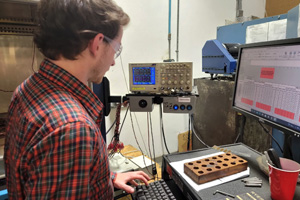- sales@motionsensors.com
- Monday - Thursday: 8AM to 5PM EST
- 252-331-2080
Speed Sensor Environmental Testing
In-house Environmental Testing Capabilities
Motion Sensors can perform a wide variety of in-house environmental testing. Our experience is that many customers require some form of environmental testing during the product development lifecycle; our ability to perform this testing in-house provides enhanced value with respect to design cost and scheduling. We also see a growing number of applications that require Acceptance Testing on each unit in the area of pressure, thermal cycling, and vibration.
Environmental chamber and ovens for thermal and burn-in testing
We perform temperature verification testing as part of the design process for many products. Additionally, per customer requirements, there are many products that require temperature cycling and/or temperature soak as part of the test criteria for each unit manufactured. Test criteria varies widely from product to product; our test equipment and processes are designed to be versatile in order to meet differing customer requirements with respect to test design, duration, monitoring (e.g. continuous monitoring of part during test), and documentation.
Pressure testing capability to 20,000 PSI
Motion Sensors sees a growing number of applications that require pressure testing of speed sensors to validate burst pressure (during initial development stages) as well as to verify working pressure for each unit. Our ability to perform this testing in-house limits the long-lead times and costly tooling and setup charges that would be incurred if this process was outsourced, especially when dealing with small volume orders.
Shaker table for vibration and impact testing
Our Unholtz Dickie vibration testing equipment is used both to prove out new designs and for R&D to make improvements to existing product lines. All of our standard product lines have been tested for vibration to MIL-STD-202G Method 214A, Test Condition H. Additional testing has been performed on standard products as well as custom designs at levels designed to meet customer and application requirements. We have also recently seen requirements for vibration testing on production units, mostly in aerospace and military applications.
